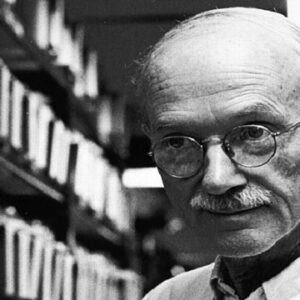George David Snell was an American geneticist who shared the Nobel Prize in Physiology or Medicine in 1980 with two other scientists. Many people referred to him as the “Father of Immunogenetics” because of his expertise in mouse genetics and transplant immunology. From a young age, he was interested in mathematics and science, and he went on to pursue higher education in science, eventually earning a doctorate in genetics from Harvard University. Following that, he worked as a teacher for a few years, teaching at places like Brown University and Washington State University in St. Louis. He joined the Jackson Laboratory in Bar Harbor in 1935 after a few years as a postdoctoral fellow at the University of Texas, and stayed there until his retirement in 1973. In 1980, he shared the Nobel Prize in Physiology or Medicine with immunologists Baruj Benacerraf and Jean Dausset for their independent ‘discoveries concerning genetically determined structures on the cell surface that regulate immunological reactions.’ He was the founder of the scientific journal ‘Immunogenetics’ and the author of several books.
Childhood and Adolescence
George Davis Snell was born in Bradford, Massachusetts, on December 19, 1903. His father worked as a secretary at a YMCA in the neighborhood. George had two older brothers and sisters.
When he was four years old, his family moved to Brookline, Massachusetts. He attended Brookline public schools for his entire education.
From a young age, he was fascinated by mathematics and science. Aside from that, he spent time reading astronomy and physics books. He also played sports such as scrub baseball and football.
He enrolled at Dartmouth College in New Hampshire in 1922 and graduated in 1926 with a bachelor’s degree in biology. He took a genetics course in college, which inspired him to pursue genetics as a career.
He enrolled at Harvard University and studied under William Ernest Castle, a geneticist. In 1930, he received his PhD in genetics from Harvard University. His doctoral dissertation was on genetic linkage in mice.
Career of George
Between 1930 and 1931, George D. Snell worked as a teacher at Brown University in Rhode Island.
He received a National Research Council Fellowship in 1931 and worked as a postdoctoral fellow with geneticist H.J. Muller at the University of Texas for two years. He studied the genetic effects of x-rays on mice with Muller.
He began working as an assistant professor at Washington State University in St. Louis in 1933. For a year, he worked there.
He began working at the Jackson Laboratory in Bar Harbor, Maine, in 1935 and remained there until 1973, when he retired as a senior staff scientist emeritus. The Jackson Laboratory was regarded as a global center for mouse genetics.
He spent thirty years researching the congenic resistant strain trap of mice, beginning in the mid-1940s. He also studied the genetics of organ transplantation.
He and immunologist Peter Gorer collaborated on research that led to the discovery of the H-2 gene complex in mice, a term he coined to describe the process of determining whether a tissue graft would be accepted or rejected.
This research led to the discovery of the major histocompatibility complex gene complex, which is found in all vertebrates.
It also laid the groundwork for successful tissue and organ transplantation.
He published papers in 1950 that marked the start of in-depth research into the’major histocompatibility complex.’
He was the first editor of the scientific journal ‘Immunogenetics,’ which he founded.
‘Cell Surface Antigens: Studies in Mammals Other Than Man’ (1973), ‘Histocompatibility’ (1976), and ‘Search for a Rational Ethics’ (1977) are among his works (1988).
Major Projects of George
Snell, George D., was a geneticist who specialized in mouse genetics and transplantation. His extensive research on mice’s immune systems led to a better understanding of the role of genes, tissues and organ transplants, and infectious diseases in immune reactions.
Achievements & Awards
In 1955, the American Medical Association awarded George D. Snell the Hekteon Medal. He received the Griffen Animal Care Panel Award in 1962. In the same year, he was honored by the Bertner Foundation.
The Czechoslovak Academy of Sciences awarded him the Gregor Mendel Medal in 1967. In 1976, he received the Gairdner Foundation Award.
He received the Wolf Prize in Medicine and the National Cancer Institute Award in 1978. Along with Baruj Benacerraf and Jean Dausset, he shared the Nobel Prize in Physiology or Medicine in 1980.
“For their discoveries concerning genetically determined structures on the cell surface that regulate immunological reactions,” the trio received the award.
Personal History and Legacy
Rhoda Carson married George D. Snell, and the couple had three sons: Thomas, Roy, and Peter. He grew up in a family that was musically inclined.
His mother was playing the piano, and the entire family was singing along. His wife was a pianist as well. He died on June 6, 1996, at the age of 92, in Bar Harbor, Maine.
Estimated Net Worth
The estimated net worth of George is unknown.


